Toyama (9/24 ~ 9/27/2025)
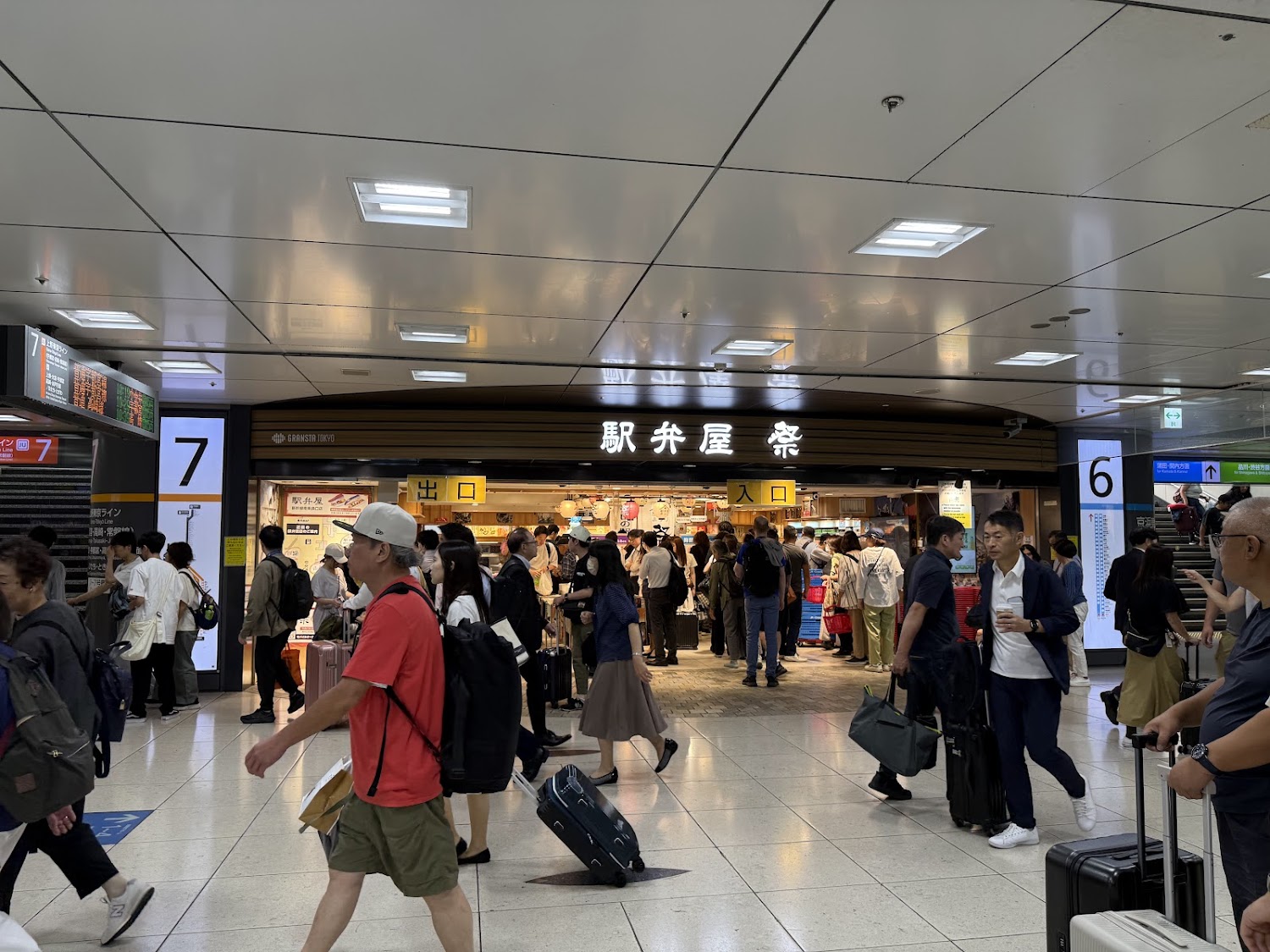
In Tokyo Station, we went to the Ekibenya Matsuri (駅弁屋 祭) inside the Shinkansen ticket gates to buy ekiben.
It is in the Central Corridor, between the entrances to the platforms for Lanes 6 & 7. Hours 5:30-22:00

Ekibenya Matsuri is said to carry over 400 varieties of popular ekiben from all over Japan.
However, there are several other ekiben sellers in the same area.
One may choose to buy an ekiben made that morning from a local vendor.

Vincent's chosen ekiben from Ekibenya Matsuri.
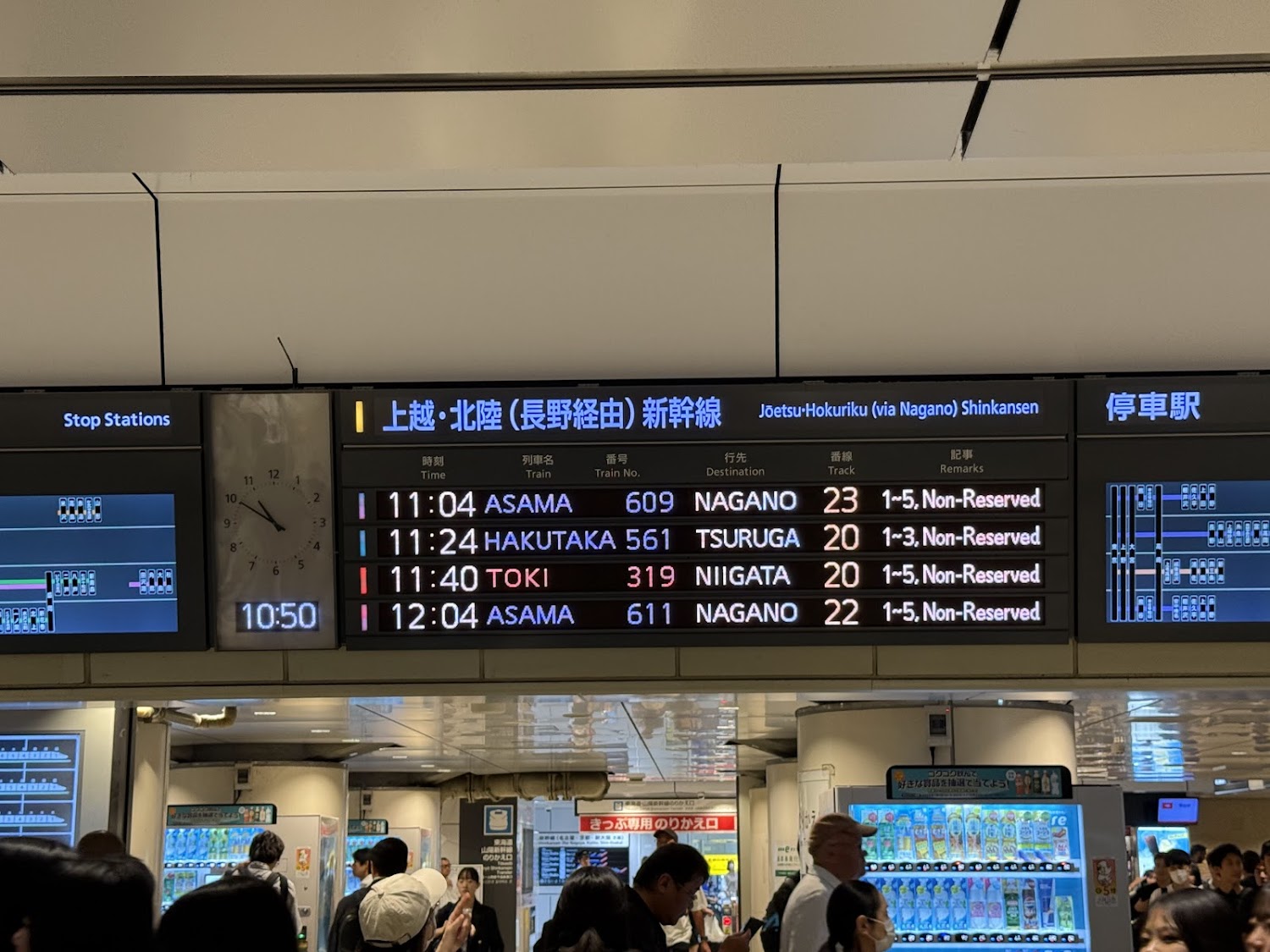
There are at least 3 different Shinkansen lines originating from Tokyo
Station.
The
Tokaido (東海道, Kyoto direction),
Tohoku(東北, Aomori direction) and
Hokuriku (北陸, Joetsu direction).
Make sure you follow the correct signs to your platform.
For Toyama, we took the 11:24 HAKUTAKA 561 Hokuriku Shinkansen toward TSURUGA.
NOTE: If you hold a full-priced ticket (not an early-bird discounted ticket) and missed your train,
you can use it to take any subsequent trains that day, provided you sit in a
non-reserved car.

After a little over 2 hours, we arrived at Toyama.
This is the bus and tram square in front of the Toyama Station.
The red arrow points to our hotel, Daiwa Roynet Hotel Toyama-Ekimae.
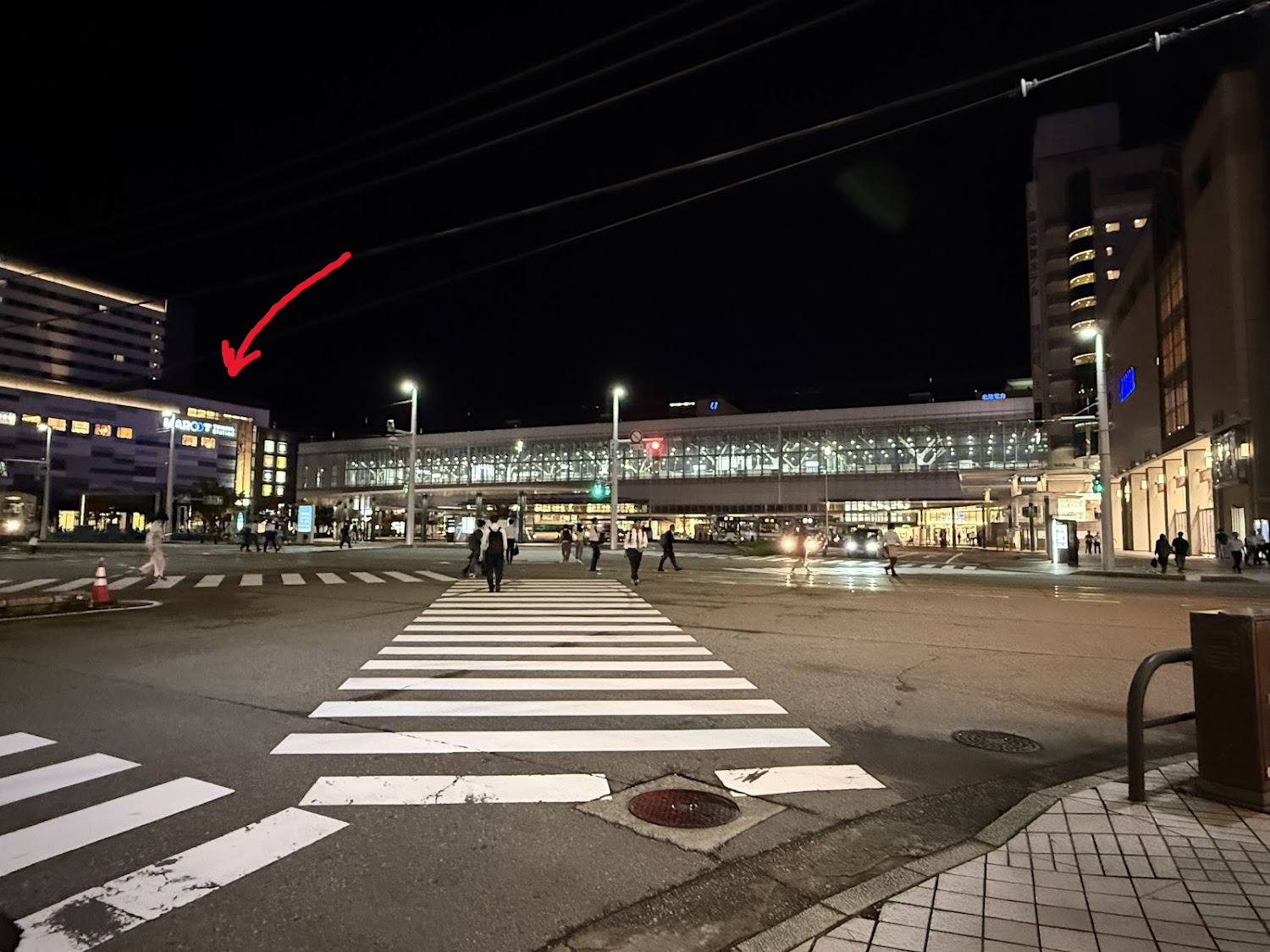
Toyama train station in the evening.
Maroot Mall is to the left of the train station.
Maroot Mall has a supermarket, bakeries, and many restaurants on the 1st,
2nd, and higher floors.

The Daiwa Roynet Hotel Toyama-Ekimae building.
The ground floor has a 7-11 and a sushi restaurant named 炙庵 (Aburian) Toyamazushi.
炙庵 Toyamazushi (pointed to by the red arrow) serves breakfast for the hotel's guests.
Non-hotel guests can also buy breakfast there at 2200 JPY/pp.

Daily buffet breakfast at the 炙庵 Toyamazushi restaurant.
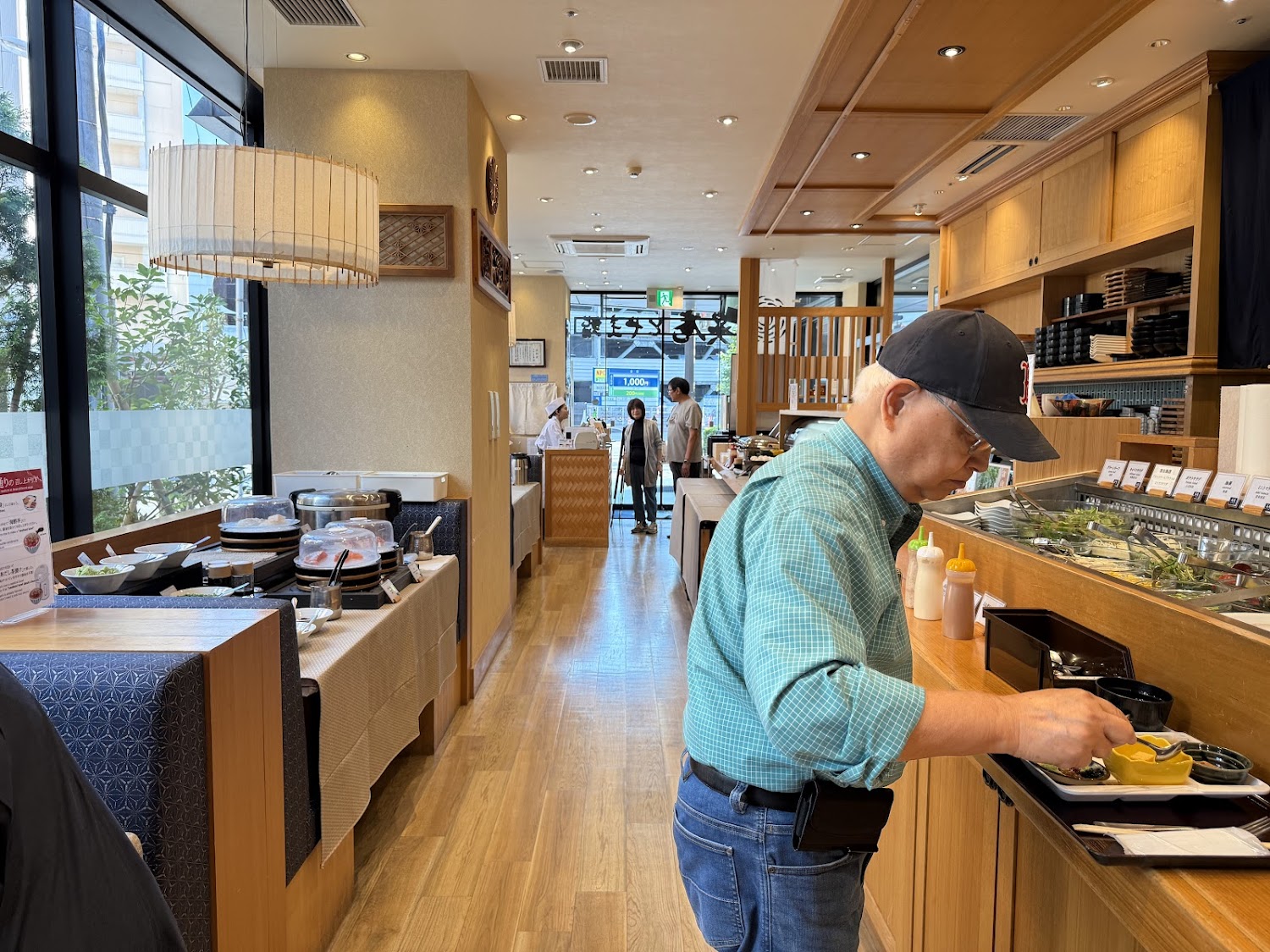
The restaurant is bright and airy with natural light.

Three kinds of sashimi were offered every morning: salmon (鮭魚), Japanese
amberjack (鰤魚, 黃尾魚, yellow tail),
and the translucent Japanese sea bream (真鯛, 紅鯛魚) in the back.
Sea Bream is a prized white fish in Japan; it is not the same fish as the
American red snapper.
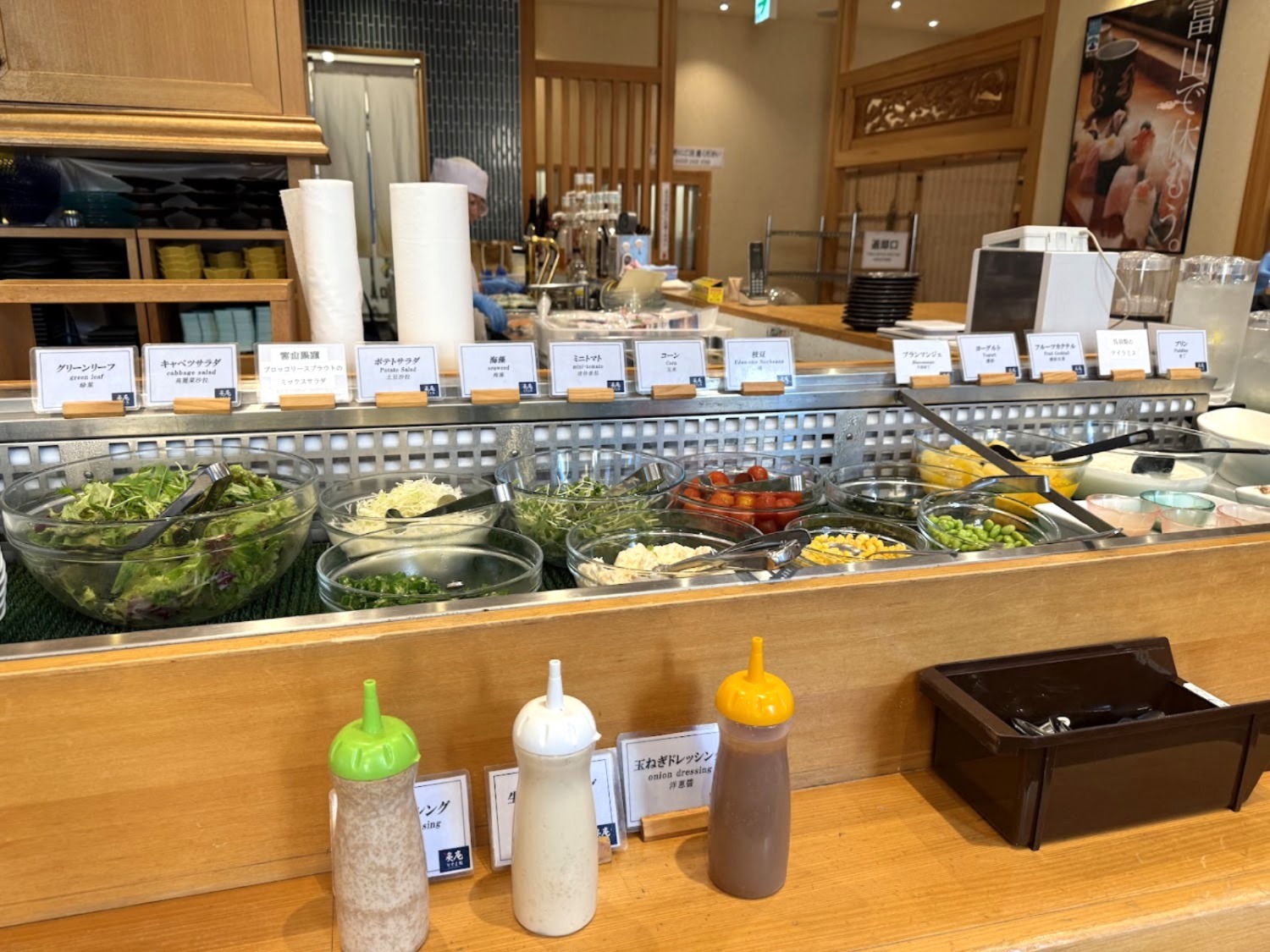
The salad bar was elevated to a higher level by the house-made ginger dressing.
The 3 jars of dressing, from left to right, are: sesame, ginger, and onion.
My favorite is the ginger dressing in the middle.

A dessert station and a juice station.
Local pears were in season, so pear tiramisu and pear juice were offered.

MC's first pick from the breakfast buffet.
6 pieces of sea bream sashimi, rice cooked with mushroom & burdock, salad with ginger dressing, and pickled vegetables.
Even the miso soup made in this restaurant was very flavorful, a notch above others
we have had.
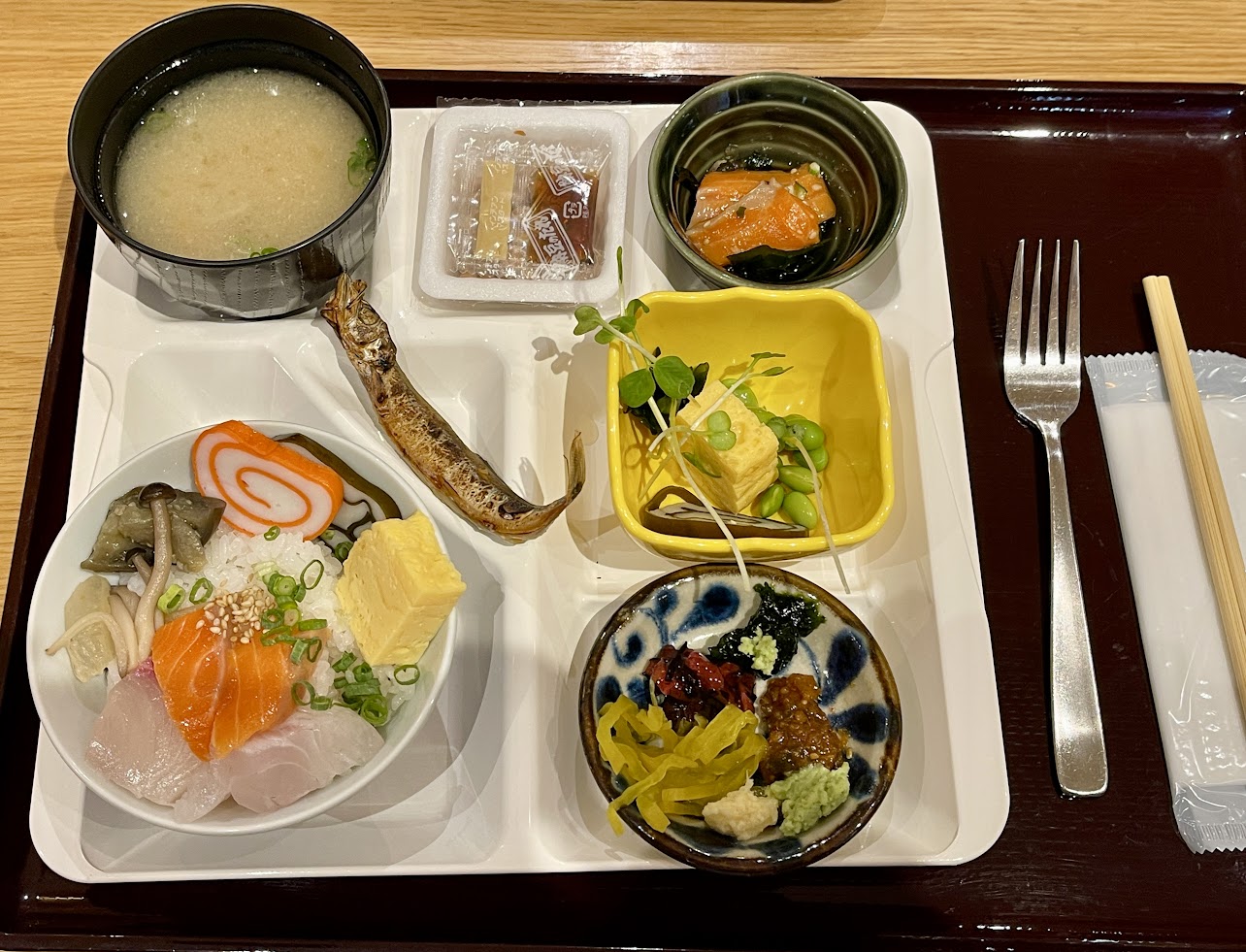
This was what VT usually had as his first pick from the breakfast buffet.

The Glass museum in downtown Toyama, which shares the same building with the city library.
We took a tram there.
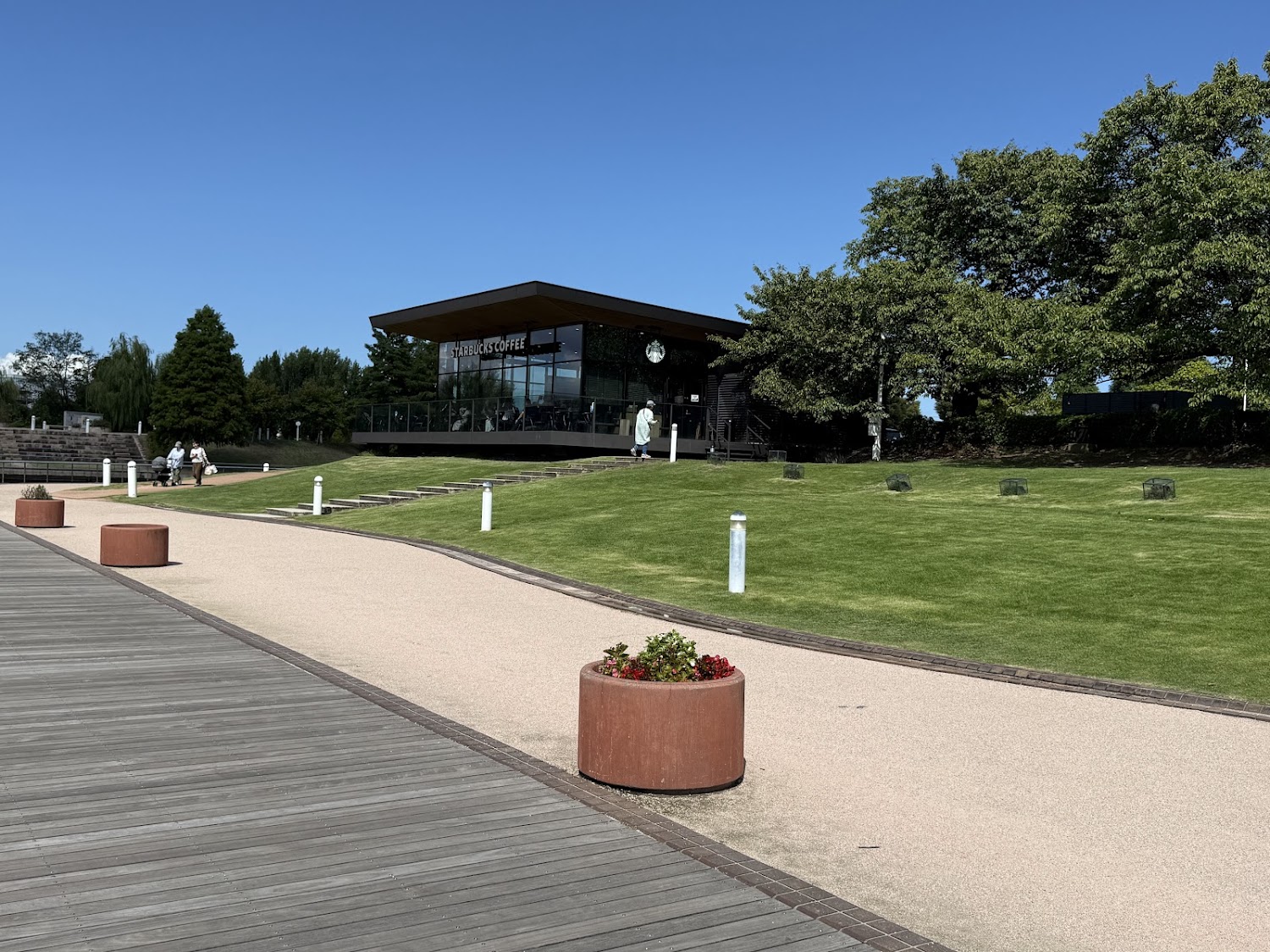
A beautiful Starbucks is located in the Kansui canal park, which is about a 10-minute walk north of the train station.

Part of the Kansui canal park.
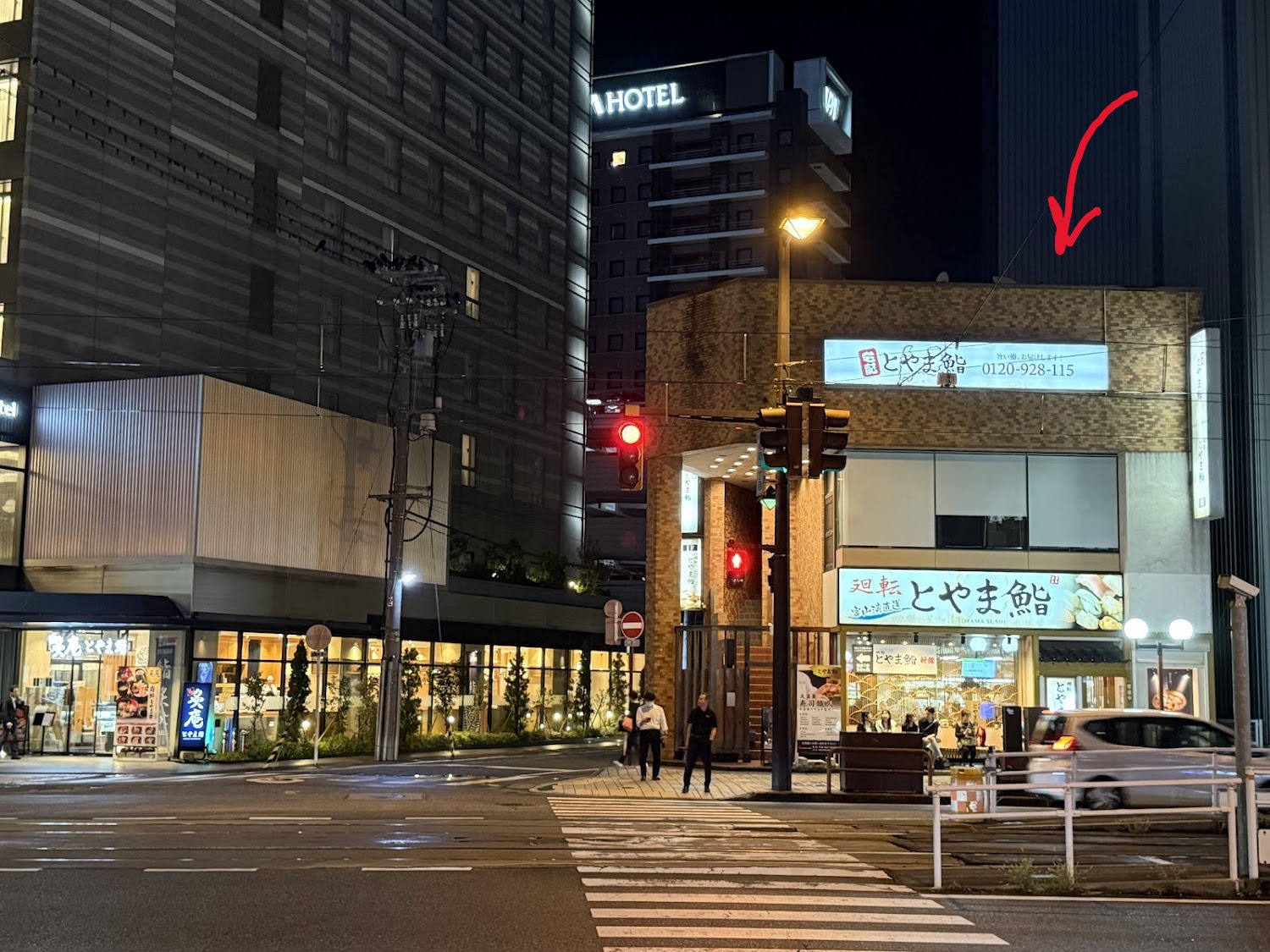
To the right of our hotel (and across a side street) is this popular Kaiten Toyama Sushi (廻転 とやま鮨),
which has been featured on several YouTube videos.
People sitting on the bench in front of the restaurant were waiting in the queue.
One misty evening we saw the line was not too long, so we took a number and waited in the queue too.
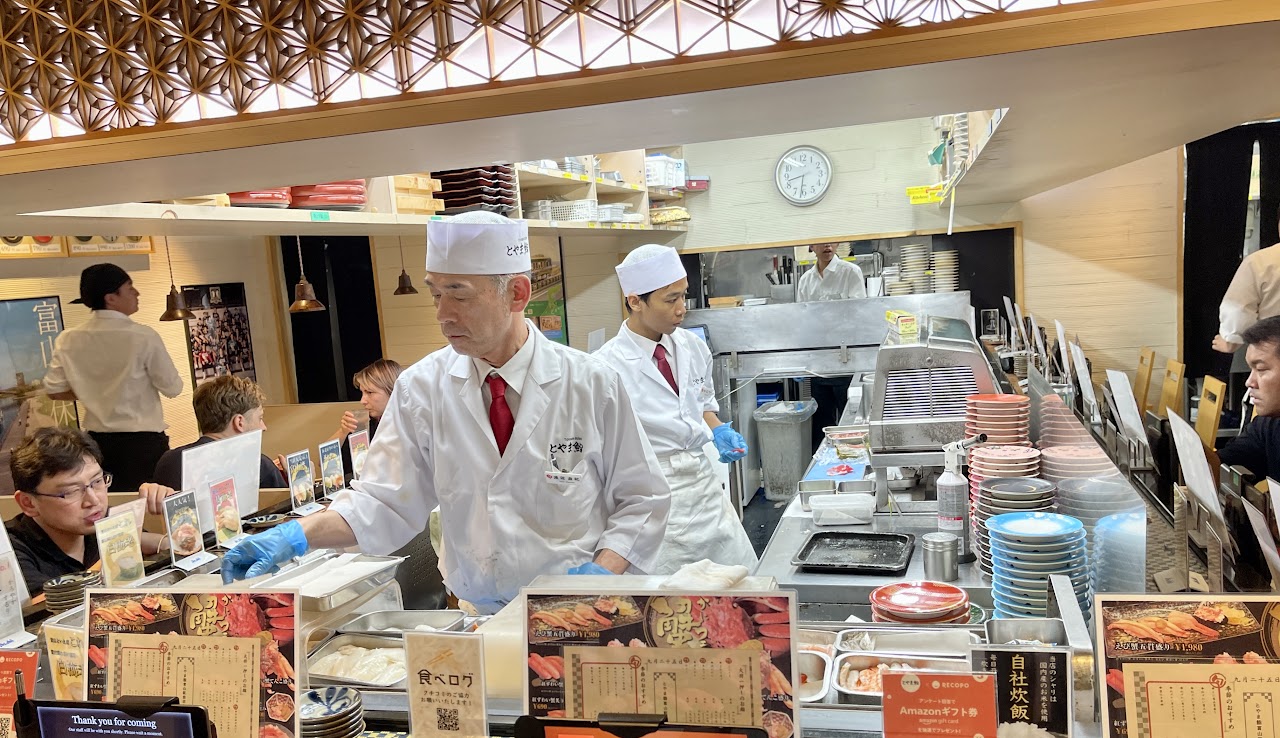
The space inside was tight, but very cozy.
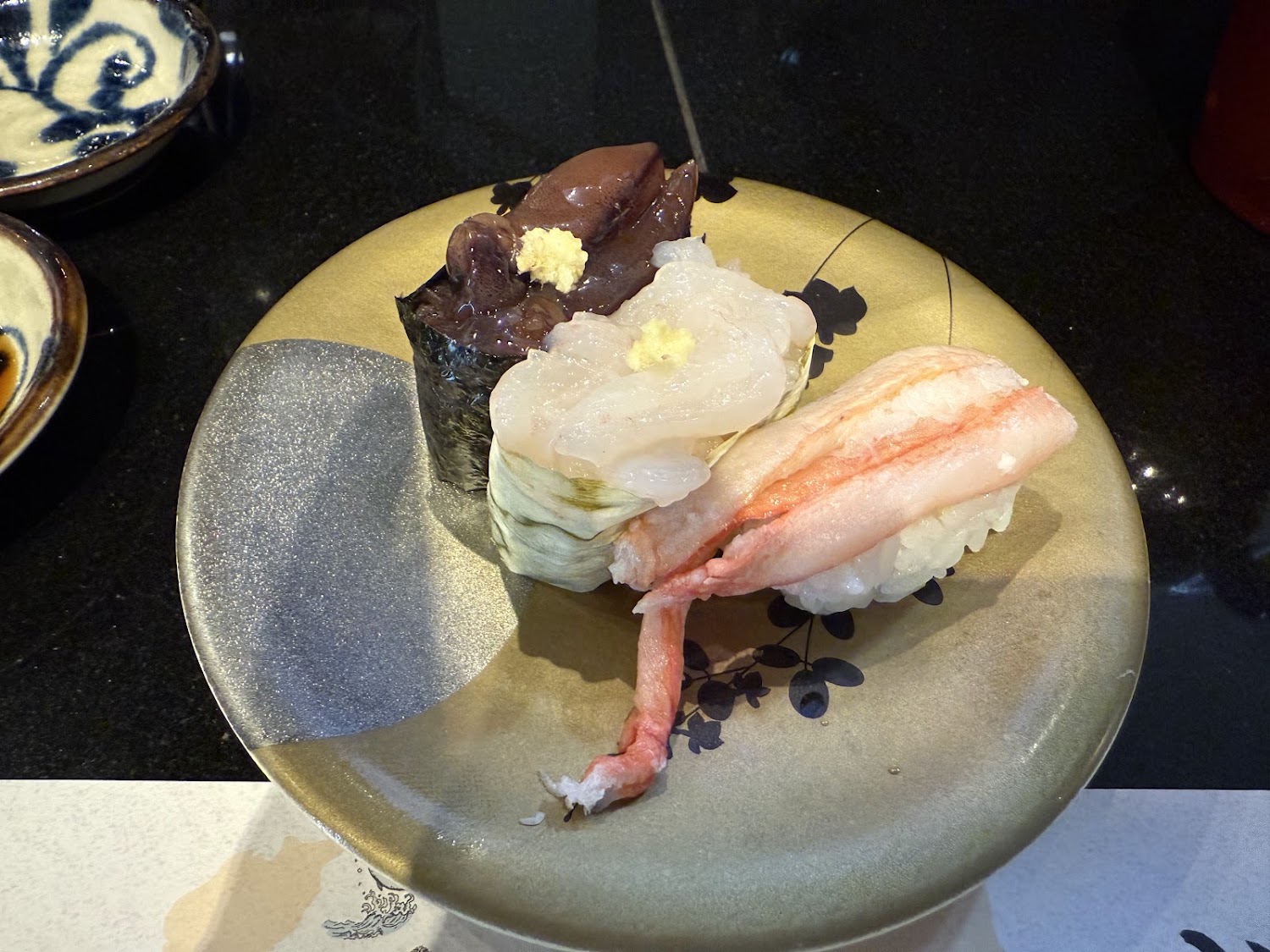
Each of us ordered the 3-piece "Toyama Bay Set", a Toyama
specialty.
From left to right: the Salted firefly squid, the White shrimp, and the Red snow crab.
The small firefly squid has guts in it, a very strange taste when biting into it, therefore, one try is enough.

This white shrimp tempura was very good.
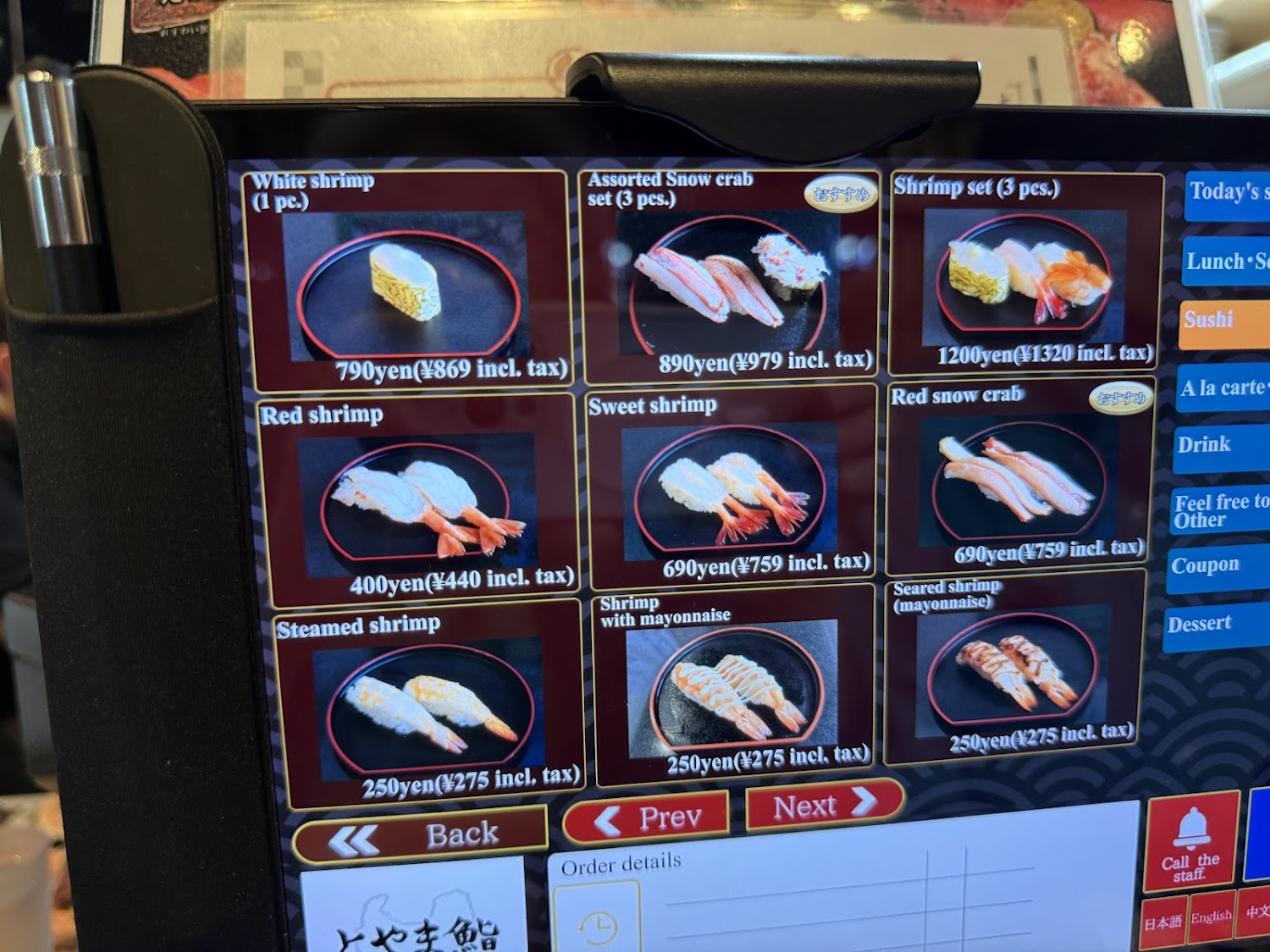
Items and prices were displayed on the screen in front of us. We ordered from the touch screen.
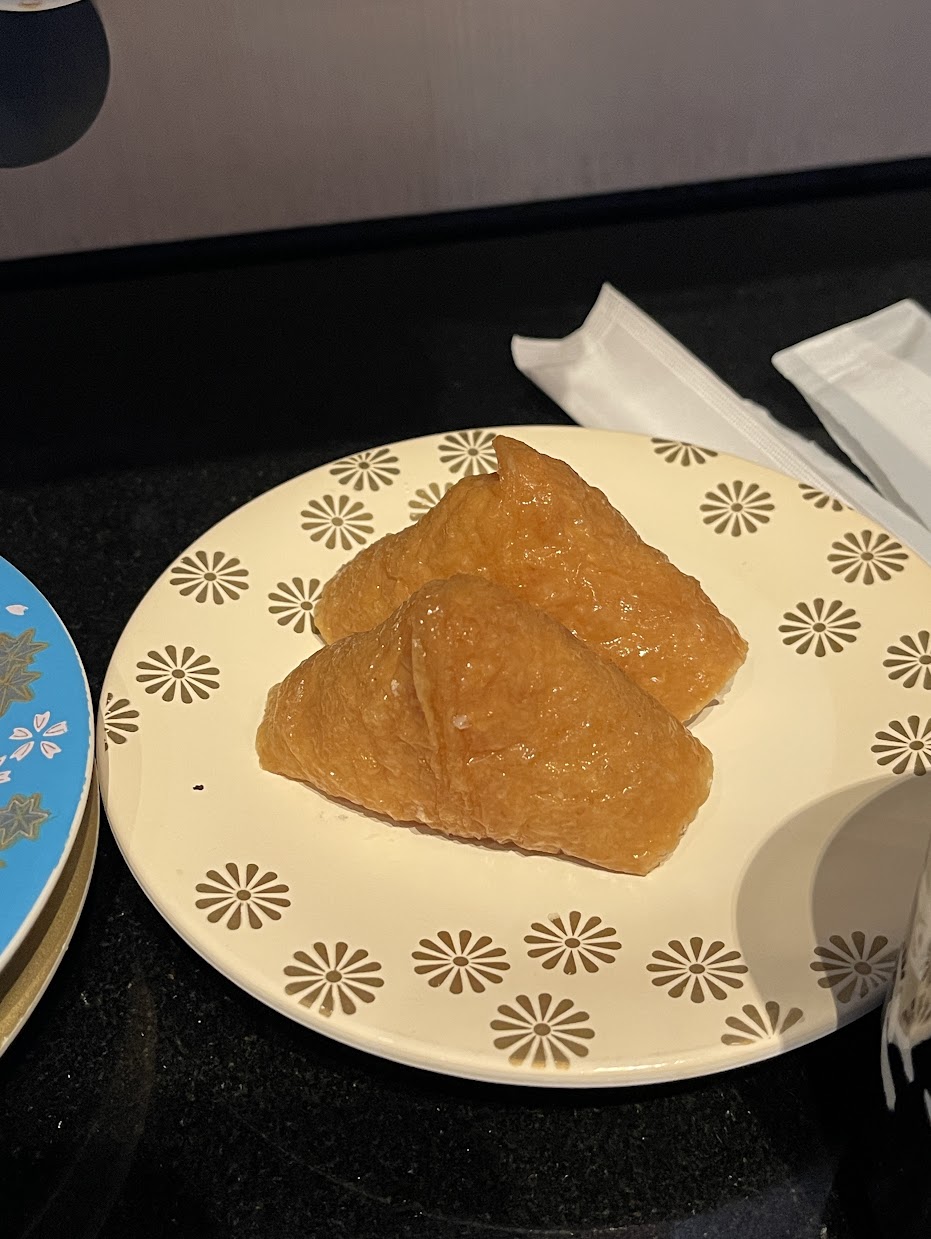
VT loves Inari sushi, which was tasty and inexpensive in Japan.
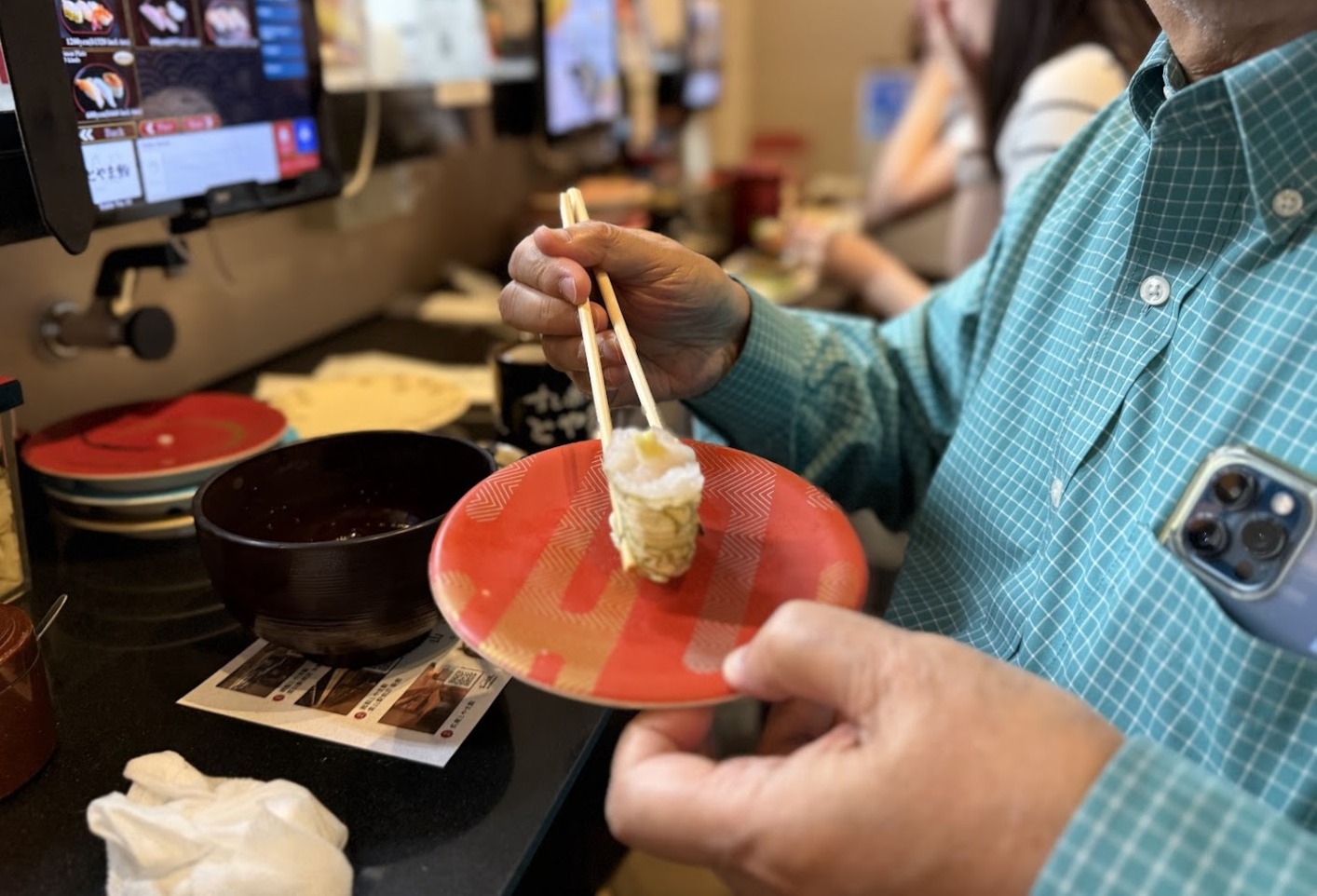
VT wore a big "B" Red Sox cap. When we were ready to pay the bill, a young staff came to sum up the total.
He asked where we are from and was excited to learn that we are from Boston.
He said he had been to Boston when the Red Sox was in the World Series
(2018? 2013?)
They began naming the Japanese players who had played for
the Red Sox, including the current one on the team.
Upon hearing baseball players' names, the sushi chef turned his head and
chimed in on the conversation.
I guess baseball is a common languages of the world.
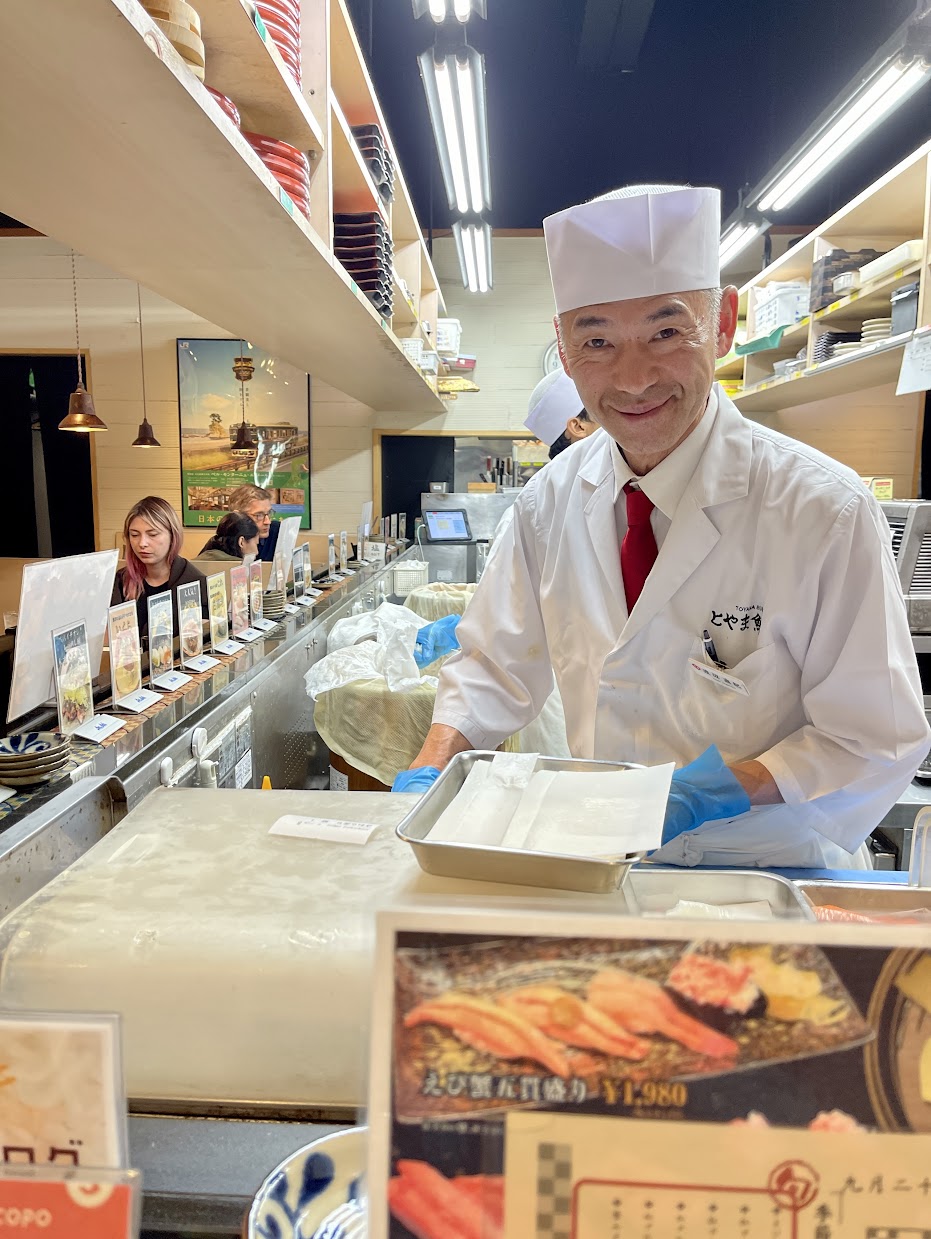
The sushi chef was all smiles when we were leaving.

On a sunny day, we took a day trip to Amaharashi (雨晴) by train.
Toyama prefecture's local train network is called Ai-no-kaze (愛の風).
Before Shinkansen was extended to this region, Ai-no-kaze served as the primary train network for getting around.
We took an Ai-no-kaze train to Takaoka(高岡), the 2nd largest city in Toyama Prefecture,
and then transferred to the JR Himi Line (氷見線) for our journey to Amaharashi.

Amaharashi (雨晴) is the blue dot on this Google Maps;
it is located at the base of the Noto Peninsula (能登半島).

The nostalgic Himi Line (氷見線) train took us to Amaharashi.
The train runs between Takaoka and Himi (氷見), a fishing harbor.
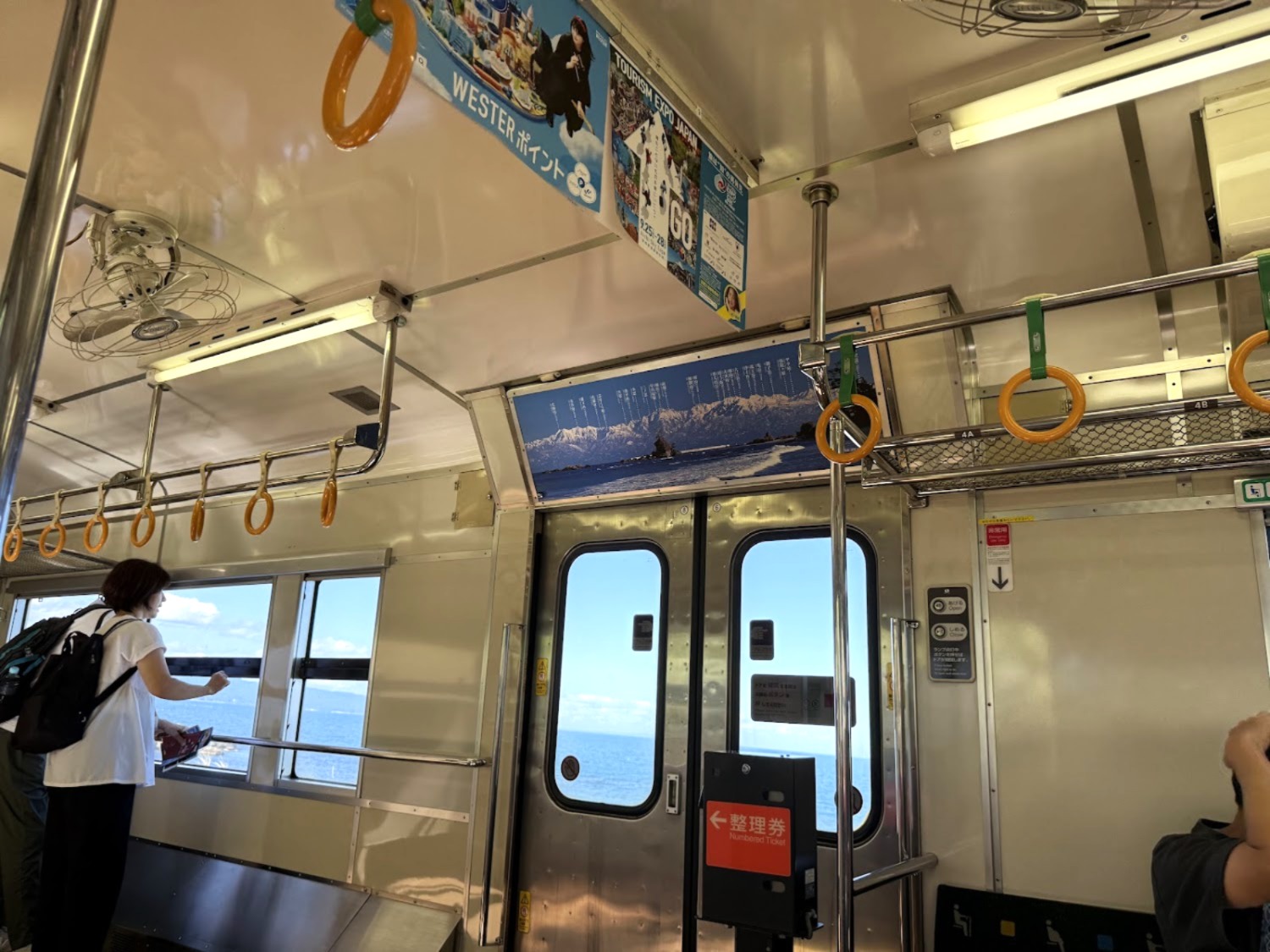
Inside the antique Himi Line train.

The Amaharashi train station
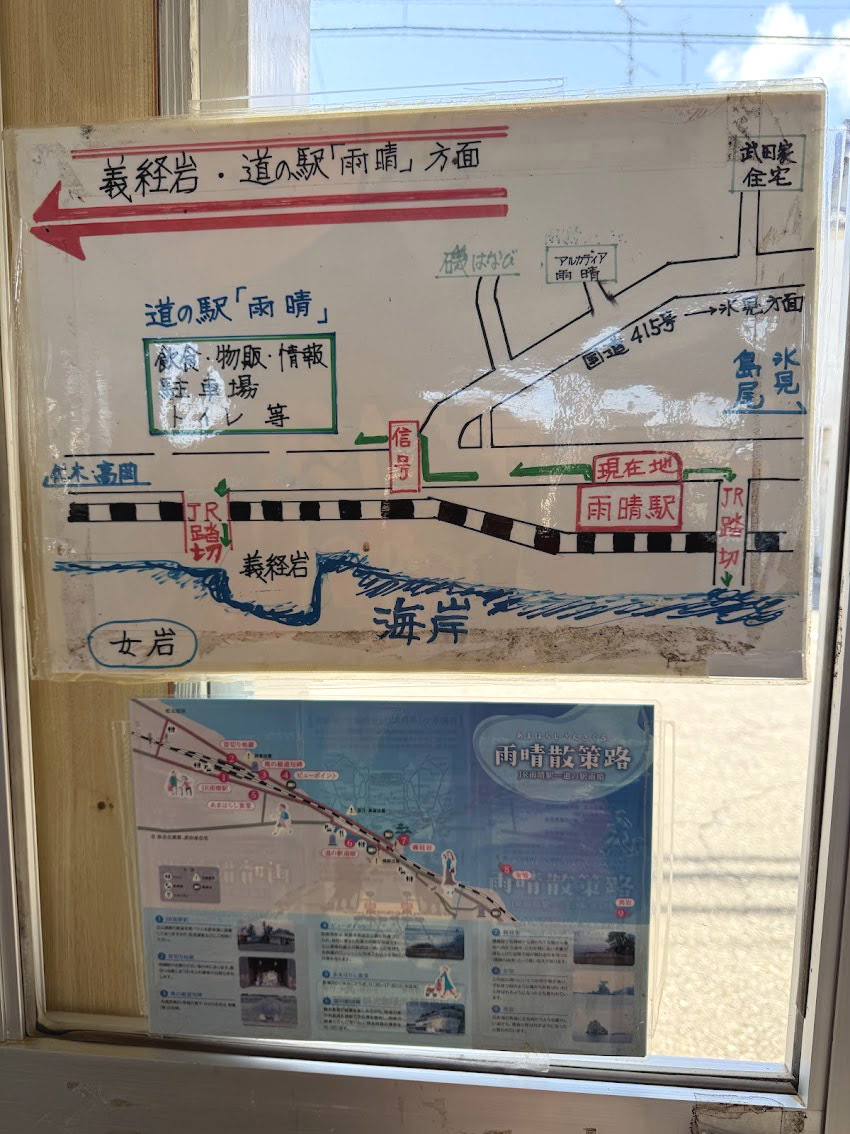
The Amaharashi Station has only one staff member to handle ticket sales and information inquiries.
A hand-drawn map was posted on the wall pointing to the directions that
most visitors wanted to ask about.
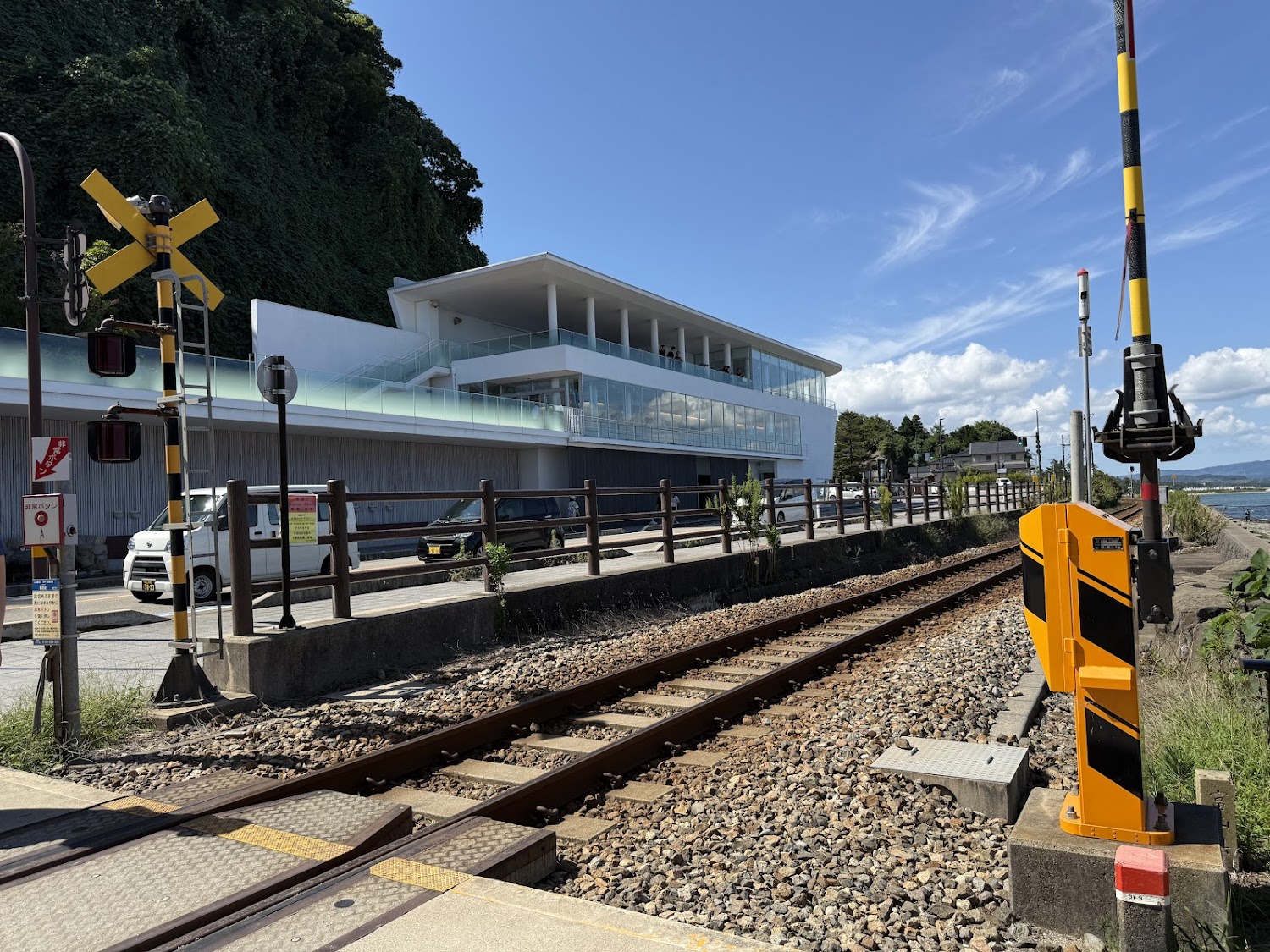
The modern 道の駅 (roadside station) that
provides convenience and comfort for visitors,
especially during cold winter days.
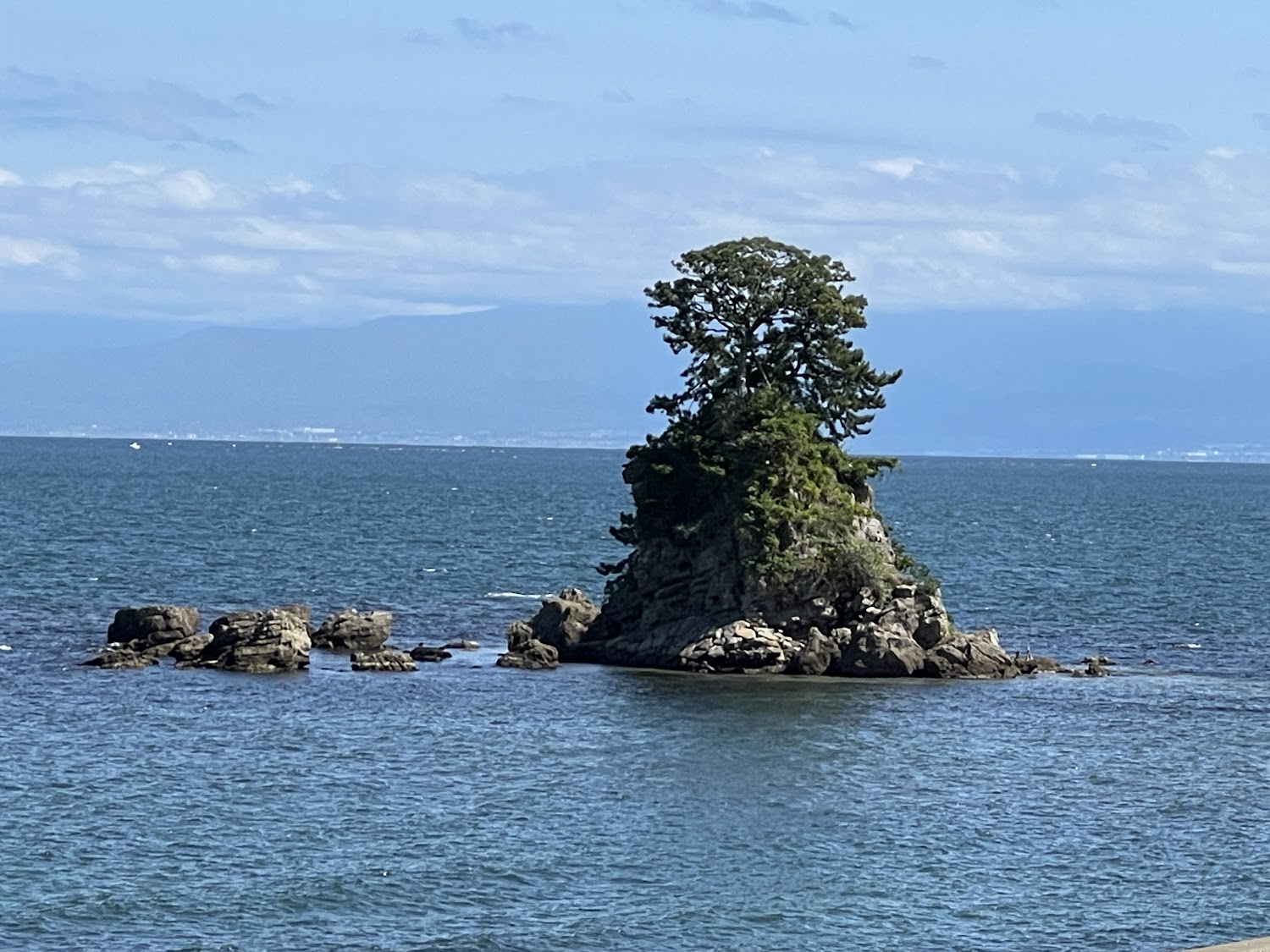
This rock is called Onna-iwa (女人岩, Woman Rock).
Beyond this rock, one could see the magnificent Tate Mountain Range (立山連峰).
But our views of the mountains were blocked by the clouds.

This poster shows what mountain range one could see if they were not blocked by the clouds.
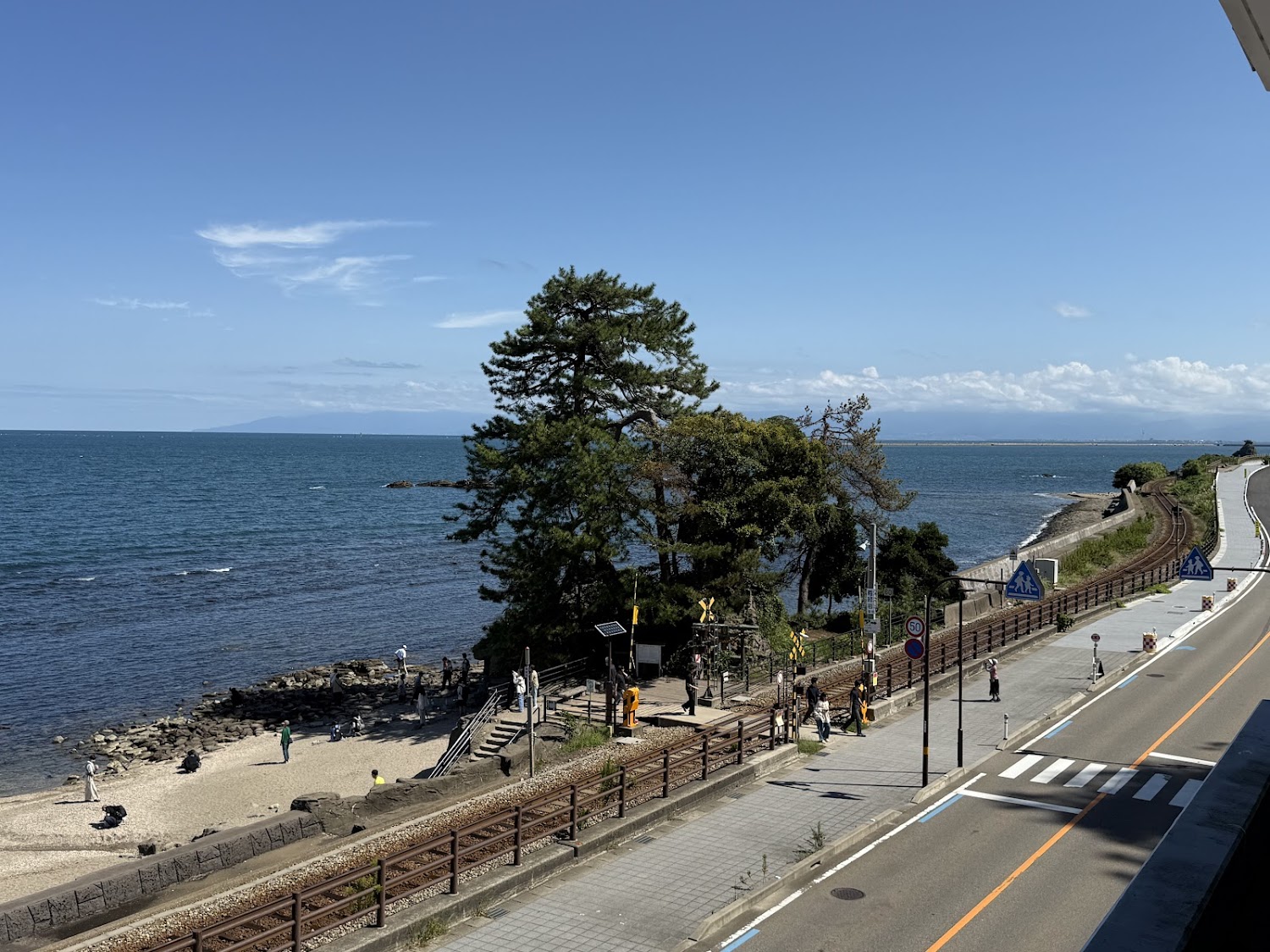
Beneath the tree is a rock named Yoshitsune Iwa (義経岩) for history buffs.
A famous historical figure, Minamoto no Yoshitsune (源 義経, 1159-1189),
is said to have waited under this rock for a rainstorm to pass.
That is why this area is called 雨晴, literally, after the rain clears.
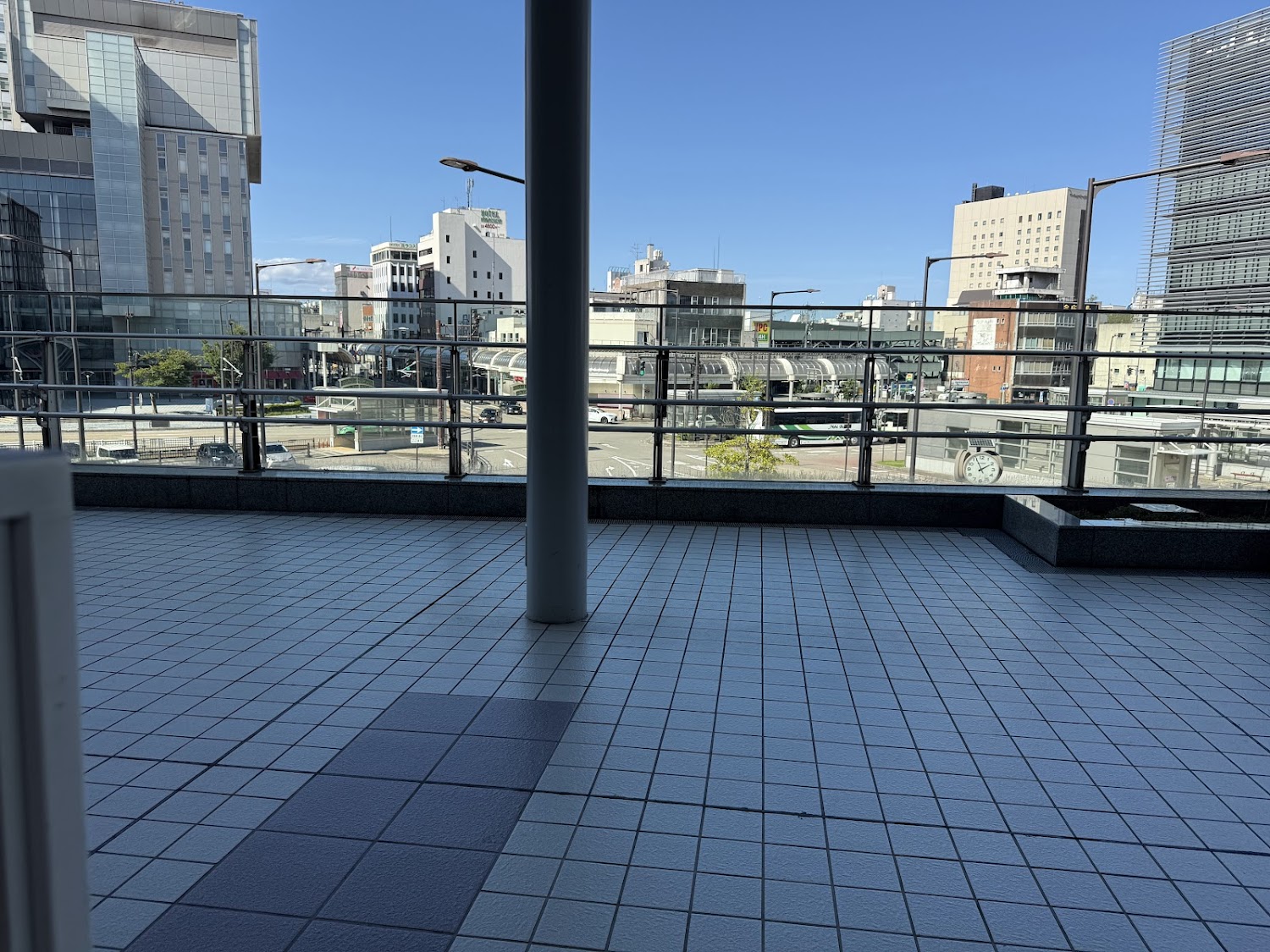
In the Takaoka train station looking toward the city.
Takaoka (高岡)
is famous for its bronze casting industry and the bronze Daibutsu (高岡大仏).
We spent a few hours here for a late lunch before returning to Toyama.
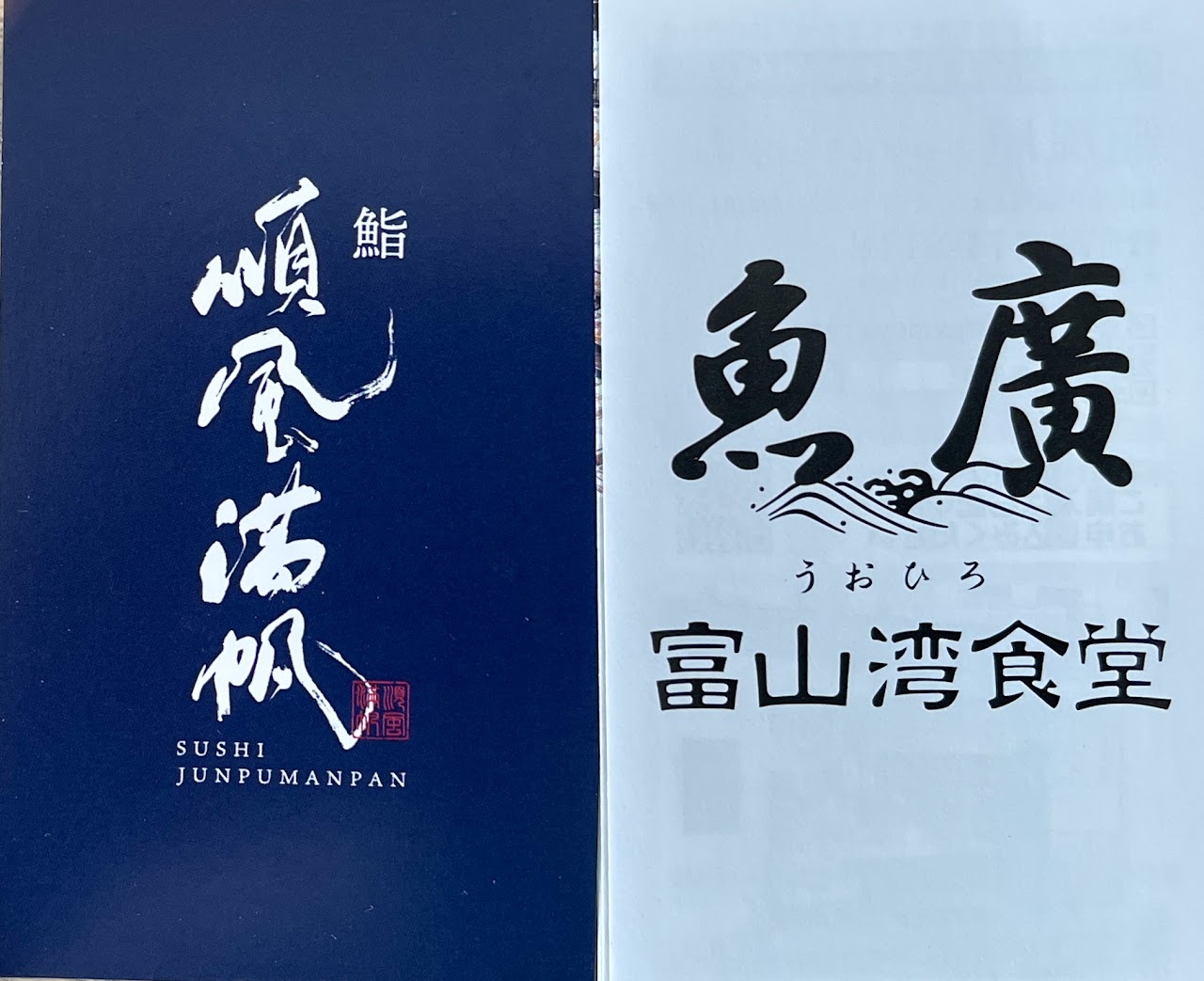
One evening, we went to 富山湾食堂 (Toyamawan Shokudo) in the Maroot Mall for dinner.
This eatery has been featured in many Toyama vlogs.
You order from a machine, get a ticket, wait for your ticket number to be shown on a screen, and pick up your food on a tray.

VT ordered a sashimi set at 富山湾食堂,
which came with salmon, yellowtail, sea bream, and tuna.
It felt more like eating in a cafeteria than a restaurant.